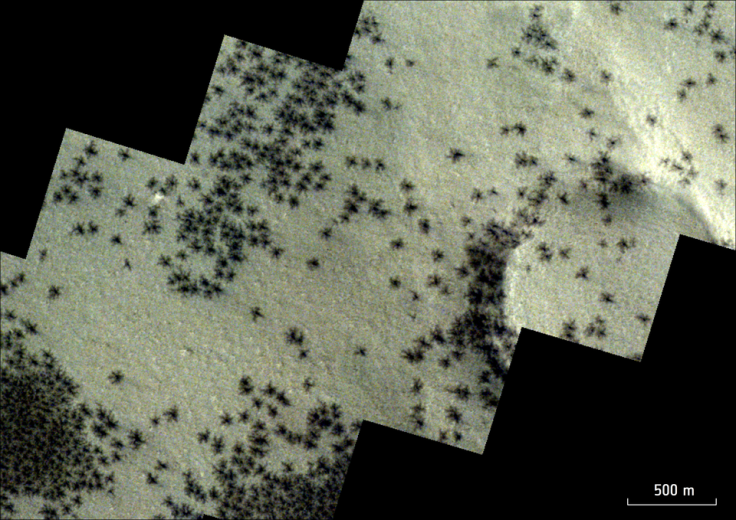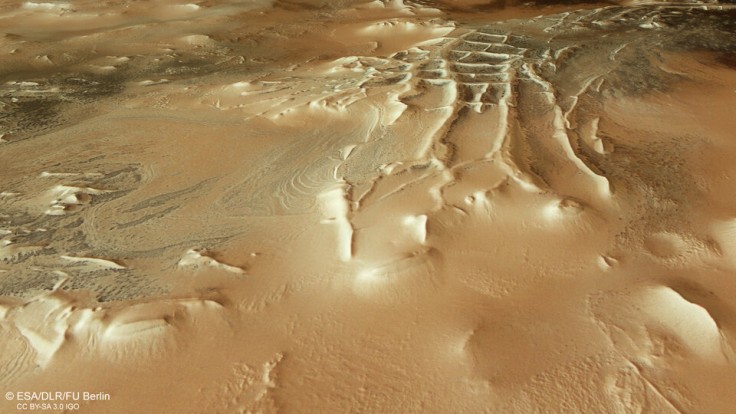Thousands of black "spiders" across Mars's surface were caught on camera during the European Space Agency's orbit in the red planet's southern polar region.
According to a report from the ESA on Wednesday, its Mars Express orbiter has captured "telltale traces" of the "spiders" during one of its regular travels over 11,000 km above Mars's surface.

What are the Black 'Spiders' on Mars's Surface?
While it would be interesting to see if the so-called "spiders" on Mars are actually giant living creatures, the dark features are actually steam from evaporated carbon dioxide ice released when the sun hits the area.
The gas emission is black because of all the dust and residue under the surface getting dragged by the sudden evaporation through cracks in ice like with geysers and tall fountains.
It is only possible for these Martian "spiders" to appear in groups in just a few areas of the planet, one of which is the so-called "Inca City" where massive veins of ice spread across the surface, forming patterns reminiscent of cities made by the Inca Empire.

Scientists are still not sure how the ice veins exactly formed but suspect that a huge space crash in the past has caused the lines, creating massive cracks that spew magma which was quickly frozen to ice by the planet's freezing climate.
The "Inca City" was first discovered by NASA's Mariner 9 probe in 1972 and was formally named as the Angustus Labyrinthus.
Manned Mars Mission Already Underway
With space agencies and governments setting up to bring people to Mars someday, both the ESA and NASA are hoping to uncover more secrets about the red planet soon.
Although no clear date is still given for the manned missions, NASA has started looking for suitable astronauts, scientists, and technical staff willing to stay on Mars.
Selected volunteers for the space venture are currently being sent up to undertake training and a yearlong simulated living in a Mars-like environment in preparation for the real hurdle once they get to outer space.
Related Article : NASA Opens Call for Volunteers to Live Yearlong on Simulated Mars









